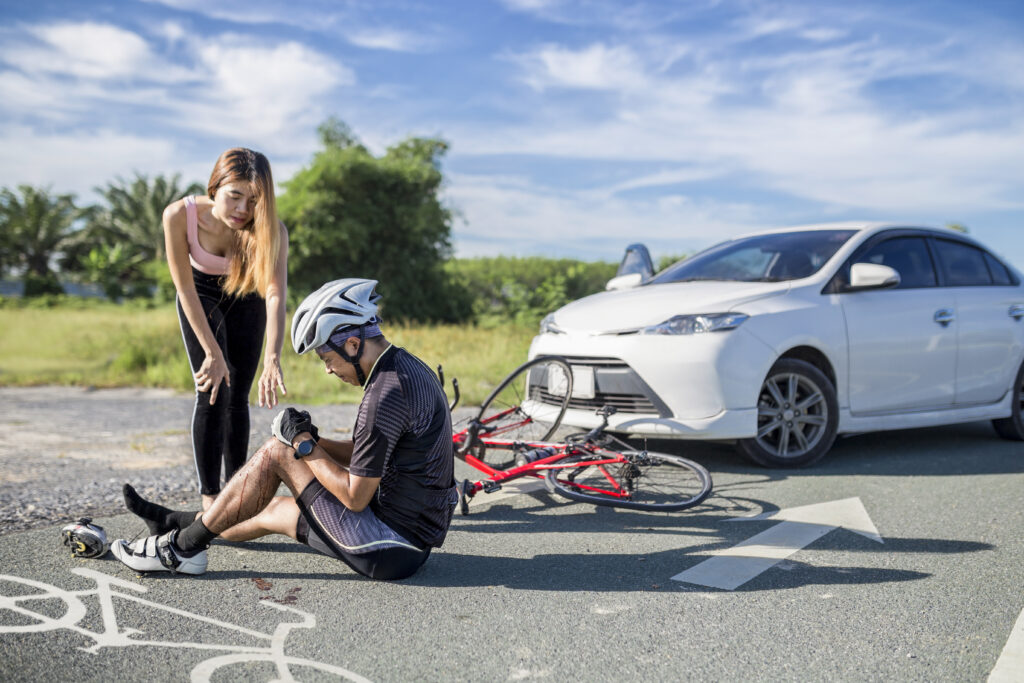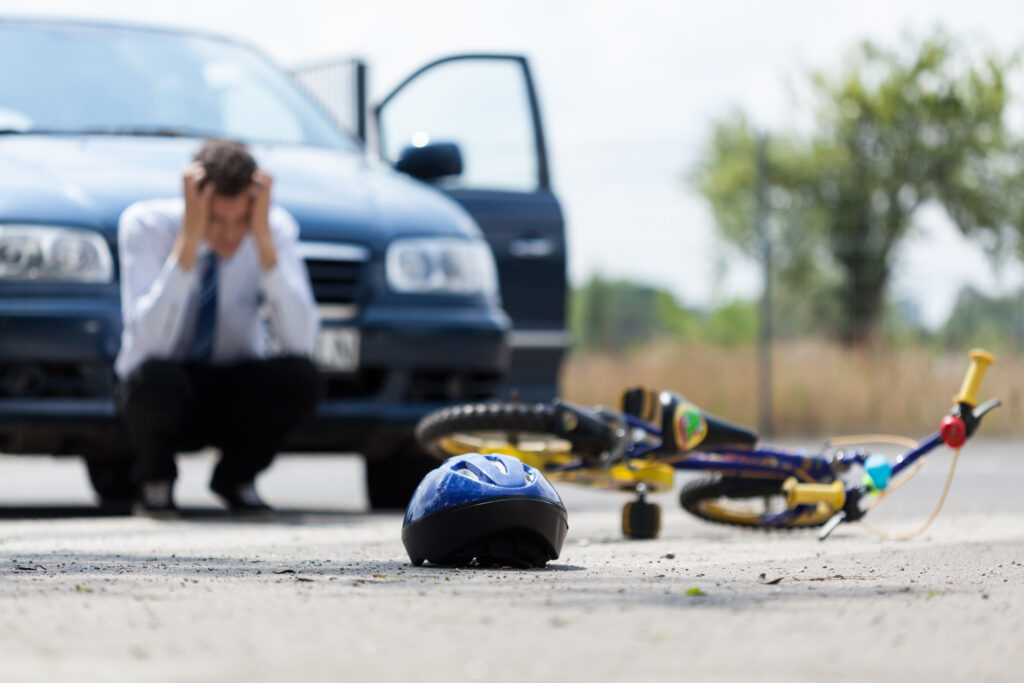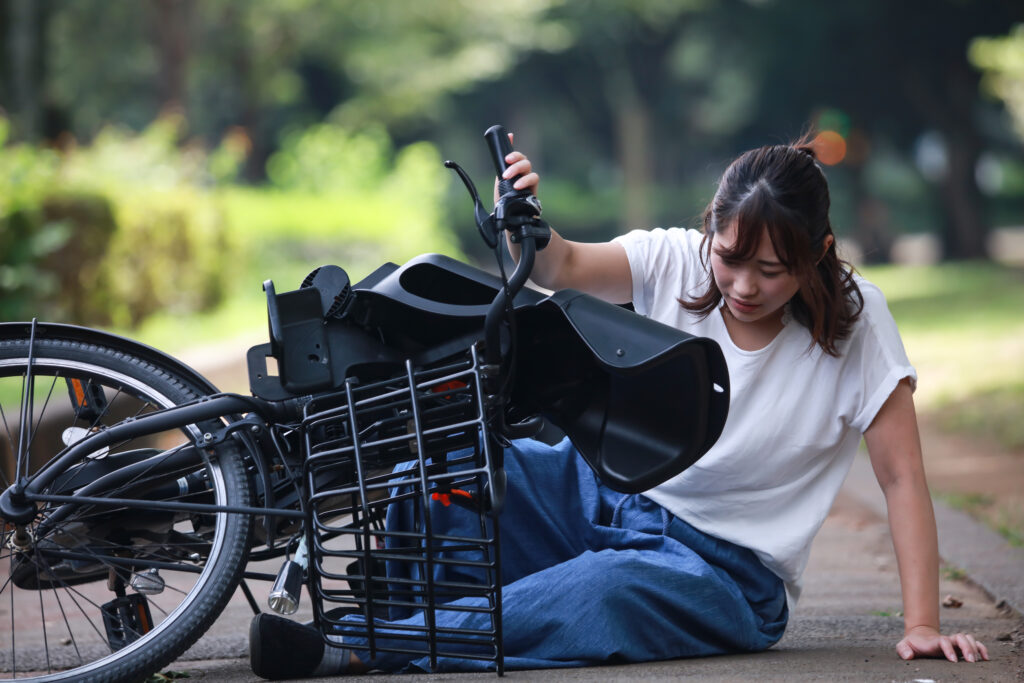Tampa Bicycle Accident Attorneys
When you decide to ride your bicycle to get to work or exercise, the last thing you expect is to get injured in an accident. Now, you are most likely dealing with issues you didn’t even know would come up, such as calls from the insurance companies, getting medical care, and finding a new way of transportation if your bike was your only way to get around.
Bike accidents are not something to take lightly. The experienced personal injury lawyers at Hancock Injury Attorneys provide tailored solutions to help our clients seek rightful compensation. With over 30 years of experience as Tampa bicycle accident lawyers, we have represented many clients who have suffered from catastrophic injuries caused by negligent motor vehicle drivers. A big part of that is taking care of all those issues for you, so you can focus on the only thing that is important: healing.
Our Tampa office serves clients throughout Central Florida, including Tampa, Spring Hill, and Wesley Chapel. Call us at 813-915-1110 to schedule a free consultation.
Safeguard Your Future with Professional Legal Support
Why Choose Our Tampa Bicycle Accident Lawyers

Bicyclists should be able to expect that drivers of motor vehicles will safely share the road. Unfortunately, when motorists fail to obey traffic laws, the major disparity in size between a bike and a car can lead to severe injuries or even wrongful death. Even when bicyclists wear helmets, the major difference in size between a bike and a car puts the person on the bike at extreme risk.
After such an injury, it may be difficult, if not impossible, to support yourself and your family while you are recovering from these injuries. In certain situations, your injuries may cause permanent physical limitations. In addition, the costs of medical treatment are exorbitant. An experienced injury Tampa bicycle accident lawyer can be instrumental in helping you recover the costs of your medical expenses, lost income, and other expenses.
Our Tampa bicycle accident attorneys can provide effective tailored legal representation specific to the area. Contact us today to discuss your case and discover how we can help you on your path to justice.
Our Office Locations
Our primary offices are located in Tampa at 1317 W Fletcher Ave., Tampa, Florida 33612. You can reach us by phone at the Tampa office at 813-915-1110. We have additional offices in Wesley Chapel at 2224 Ashley Oaks Circle, Suite 102-E, Wesley Chapel, Florida 33544. Call the Wesley Chapel office at 813-537-6927. We serve clients in Tampa, Spring Hill, Wesley Chapel, and throughout central Florida.
Bicycle Accidents in Tampa and Florida

Florida Highway Safety and Motor Vehicles (FLHSMV), on its Florida Crash Dashboard, reports there were 276,492 crashes in the state at the latest count, accounting for 2,331 deaths and 176,029 injuries. In Hillsborough County, where Tampa is located, there were 22,967 crashes during the reporting period, with 176 fatalities and 15,879 injuries.
The Tampa area saw a total of 493 bicycle crashes with 10 fatalities.
According to the U.S. Department of Transportation Federal Highway Administration (FHWA), Tampa Bay area residents travel roads with the highest traffic fatality rate per capita among large counties in the United States. Over a six-year reporting period, nearly 1,300 people died because of motor vehicle crashes in the county. On average, one pedestrian and one bicyclist are involved in a crash per day.
The most current national injury data compiled by the U.S. Centers for Disease Control and Prevention (CDC) notes that Florida’s injury rates were 12.57% higher than the national average for unintentional injuries. Compared with the nation's six most populous states, Florida's injury death rates were highest in the following categories: motor vehicle injuries, suicides, drowning, pedestrians, and pedal cyclists.
Common Causes of a Tampa Bicycle Accident

Many bicycle accidents are caused by a motorist’s failure to yield, cutting off a bicyclist, drifting onto the shoulder of the road, or other clear-cut cases of negligence. In certain cases, you may be the victim of a hit-and-run accident. Our dedicated personal injury law firm will fully investigate your case to locate every source of compensation for your injuries. We will work tirelessly to help you get your full measure of damages.
Bicyclists have a right to ride on most roadways, with freeways as the exception. Many towns and cities have bicycle lanes to encourage people to use this alternative and to give bicyclists a safe space while riding in automobile traffic. However, most roadways do not have bicycle lanes, which, when combined with inexperienced bicyclists or those who fail to follow basic traffic laws, accidents and fatalities are inevitable.
The most common type of bike wrecks we see is when motor vehicle drivers cause collisions with bicycles, including the following:
- Failure to yield when turning left at an intersection
- Cutting off a bicyclist when turning right
- Driving while texting
- Running a red light or stop sign
- Drunk driving
- Road rage
- Drifting into a bicyclist, walker, or jogger on the shoulder of a road
Responsibilities of Motorists and Bicyclists on Tampa Roads
In Florida, both motorists and bicyclists have responsibilities to ensure safety and prevent accidents. Understanding these responsibilities is crucial for determining liability in case of an accident:
Responsibilities of Florida Motorists
Drivers have a legal responsibility to observe traffic laws for the safety of others. When drivers fail to live up to this duty, they may be liable for the ensuing injuries. Consulting a local bicycle accident lawyer may be vital in holding negligent drivers responsible for their actions. Motorist responsibilities include:
- Yielding to Bicyclists: Motorists must yield the right-of-way to bicyclists in marked crosswalks and at intersections where there are no traffic signals when the bicyclist is in the intersection or close enough to pose a hazard.
- Maintaining Safe Passing Distance: When overtaking a bicyclist, motorists must provide at least 3 feet of clearance.
- No Impaired Driving: Driving under the influence of alcohol or drugs is illegal and dangerous, and it can lead to accidents involving bicyclists.
- Respect for Bike Lanes: Motorists should not drive in designated bike lanes unless necessary for parking or turning.
- Exercising Caution: Motorists must exercise caution when encountering bicyclists and be aware of their presence, especially when making turns at intersections.
Responsibilities of Florida Bicyclists
Florida bicycle riders need to be aware of statutory provisions set out in Section 316.2065, Florida Statutes. Chief among these, when operated on a roadway, a bike is considered a “vehicle”, and the cyclist is the “operator” of that vehicle. The bicyclist must follow the same traffic rules as the operator of a vehicle as well as those rules applicable to a cyclist. However, when on a sidewalk, a bicyclist is considered a “pedestrian” and must follow the same rules as that of a pedestrian as well as those rules applicable to a bicyclist.
- Obey Traffic Laws: Bicyclists must follow the same traffic laws as motorists, including obeying traffic signals, stop signs, and right-of-way rules.
- Use Hand Signals: Bicyclists should use hand signals to indicate their intentions to turn or stop.
- Proper Lighting: Bicyclists riding at night must have a white light on the front and a red light or reflector on the back, as well as reflectors on the wheels and pedals.
- Stay in the Right Lane: Bicyclists must generally ride in the right lane, except when overtaking another vehicle or preparing for a left turn.
- No More Than Two Abreast: Bicyclists should ride no more than two abreast, except on bike paths or roadways specifically designed for bicycle use.
Specific rules set out by these statutes address responsibilities for using bike lanes, riding with traffic, proper safety equipment for visibility and operation, and other actions that may affect safety. Talk to your lawyer about the specifics of your crash. They can help determine your possible liability and how it may affect your claim. A Tampa bicycle accident attorney with experience handling bicycle crashes can work with you to maximize your compensation.
Establishing Liability in a Bike Crash Claim

Liability in a bicycle crash is established through evidence, witness statements, and an examination of how each party adhered to their respective responsibilities. Determining liability can be complex and may involve negotiations or litigation to reach a resolution that fairly compensates the injured party based on the degree of fault attributed to each party.
Florida Bike Helmet Rules and Liability
Florida Statute Section 316.2065(1)(d) requires that anyone younger than 16 wear a helmet while riding their bike. In fact, should a child be injured in a bicycling accident, statutes provide that the failure of a parent to allow a child to ride without a helmet may be considered evidence of the comparative negligence of that parent. However, if someone 15 or younger is not wearing a helmet and gets hit by a car and suffers a head injury, the law does not prevent them from seeking compensation for their injuries.
Comparative Negligence
Florida law is a comparative negligence state. This means that at trial, the Tampa bicycle accident attorney representing the negligent driver may be allowed to enter into evidence the fact of the non-use of a helmet, and the jury can apportion a percentage of blame to the injured bicyclist. Any award of money damages would then be reduced by that percentage. A skilled Tampa pedestrian accident lawyer can explain these laws and work to obtain maximum compensation for the injured parties.
Determining the Value of a Bicycle Injury Claim

In Florida, those injured by the negligence of another are entitled to the following damages:
- Past and future medical expense
- Past and future lost wages
- Pain and suffering
- Mental anguish
- Permanent disability or physical impairment
- Loss of capacity for the enjoyment of life
- Punitive damages
In addition, Florida bicycle law allows your spouse to recover for his or her losses, referred to as a claim for loss of consortium.
Bicyclists could suffer a wide range of devastating injuries in accidents including broken bones, traumatic brain injuries, spinal cord injuries, and amputation. These injuries could leave bicyclists hospitalized, requiring lengthy rehabilitation programs, and accruing extensive medical bills.
For those who are permanently impaired, medical expenses, home health care, and personal care costs may be ongoing and extensive. Additionally, individuals who are no longer able to work, whether temporarily or permanently, may be able to seek lost wages as part of their bike accident claim.
Other types of damages that may be available in bike injury claims could include emotional distress, physical pain and suffering, and loss of enjoyment of life. Permanent disabilities may merit additional damages due to the recognition that bicycle accident victims will never recover from their injuries completely.
If the negligent acts of another caused the wrongful death of a loved one, certain family members and survivors have the right to recover damages by filing a wrongful death claim.
Florida No-Fault Laws
Because Florida is a “No-Fault” state, a bicycle rider looks to their own Personal Injury Protection (PIP) auto insurance first to pay for medical bills and lost wages. If a bicycle rider owns an insured vehicle, regardless of their fault or whether they were riding a bike or driving, that person’s PIP insurance would be the primary source for paying for medical care and lost wages. Additionally, a bicycle rider may also have Medical Payments coverage available to them on their auto policy.
Over and above the PIP insurance and Medical Payments insurance, a bicycle accident victim may also make a claim against the at-fault party’s bodily liability auto insurance coverage for negligence. If the at-fault party does not carry bodily liability auto insurance, which is not required in Florida, but the rider has uninsured motorist coverage (UM), they may be able to utilize these UM benefits to pay for their losses.
Reduced Compensation for Partial Fault
In Florida, when it comes to personal injury claims like those resulting from bicycle accidents, the state follows a "pure comparative negligence" system. This means that if you, as the injured party, are found to be partially at fault for the accident, your compensation will be reduced in proportion to your percentage of fault. Here's how reduced compensation works in a bicycle accident where both the bicyclist and another party (e.g., a motorist) are partially at fault:
- Determining Fault: Liability is assessed based on the evidence and circumstances of the accident. Both the bicyclist and the other party involved may be assigned a percentage of fault.
- Calculating Compensation: If you, as the bicyclist, are found to be, for example, 20% at fault for the accident, your compensation will be reduced by 20%. This means you can still recover damages, but the amount you receive will be diminished to account for your share of responsibility.
- Example: Let's say your total damages amount to $10,000, but you are determined to be 20% at fault. In this case, you would receive $8,000 in compensation ($10,000 - 20% of $10,000).
This system ensures that even if the injured party bears some responsibility for the accident, they can still seek compensation. However, the amount they receive is directly proportional to their degree of fault. It's essential to consult with a personal injury attorney to navigate the complexities of comparative negligence and pursue a fair and just settlement for your bicycle accident injuries.
Florida Statute of Limitations
Filing your claim within the designated legal time frame is crucial. In Florida, the statute of limitations for a personal injury or wrongful death claim is typically two years. If you don’t file your claim within the required timeframe, you may lose your right to seek compensation.
Schedule Your Free Consultation with a Tampa Bicycle Accident Attorney Today

Our law firm has successfully represented bicyclists who have suffered from traumatic brain injuries, spinal cord injuries, broken bones, and other devastating and permanent injuries after a crash. Our 5-star reviews from previous clients attest to our record of success in working to protect our community. We will listen to your questions, make recommendations, and provide you with a free, confidential evaluation of your bike collision case, all at no cost to you, nor obligation to use our services. Protecting our community is important to us.
Our community will be a safer place by holding wrongdoers accountable for the harm they cause. Getting the advice that you need could be instrumental in your quest to pursue compensation for your injuries successfully. When a driver’s negligence causes you injury, reach out to a Tampa personal injury lawyer for advice on how to bring a claim. Contact us by calling 813-915-1110 or fill out the contact form on this website.